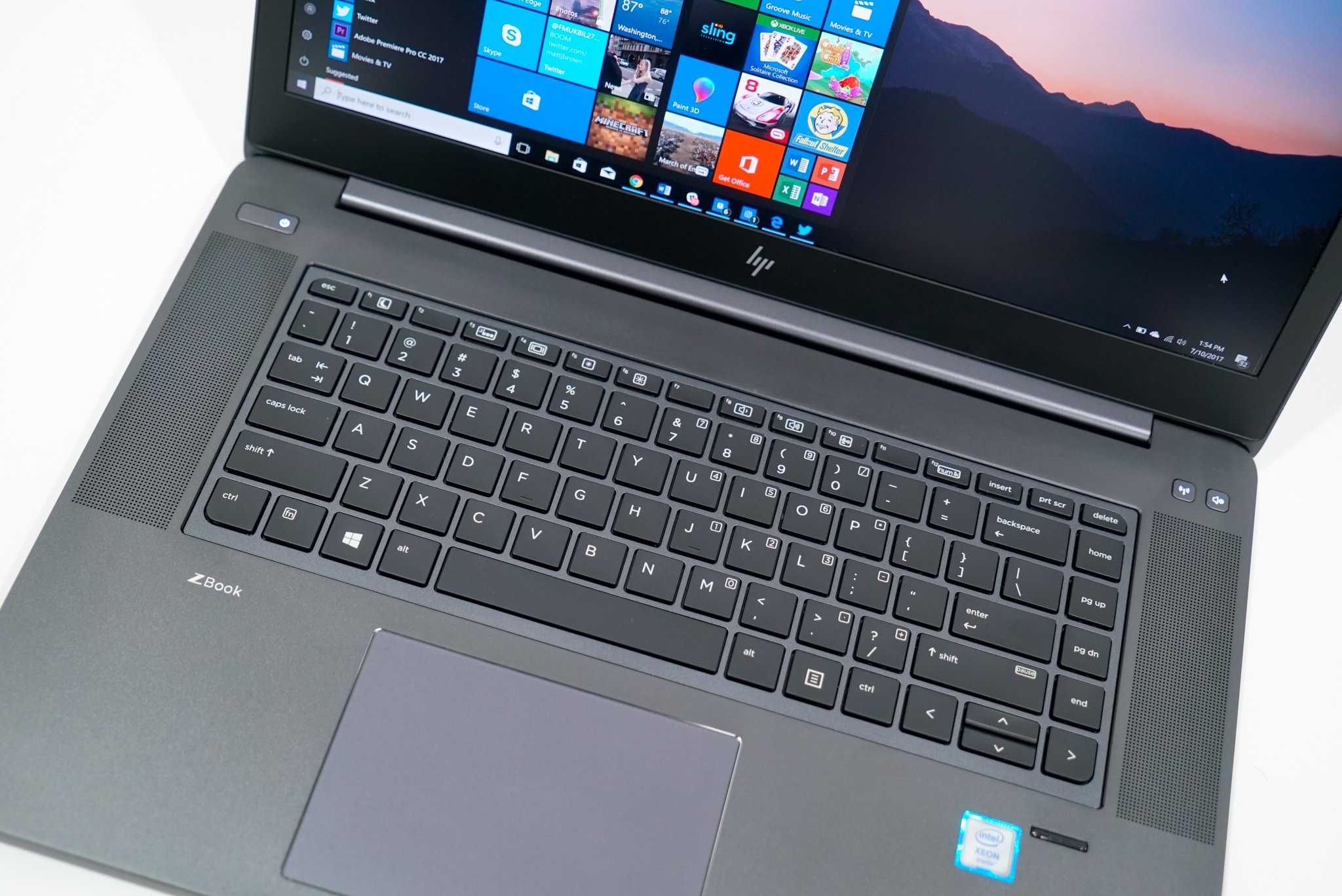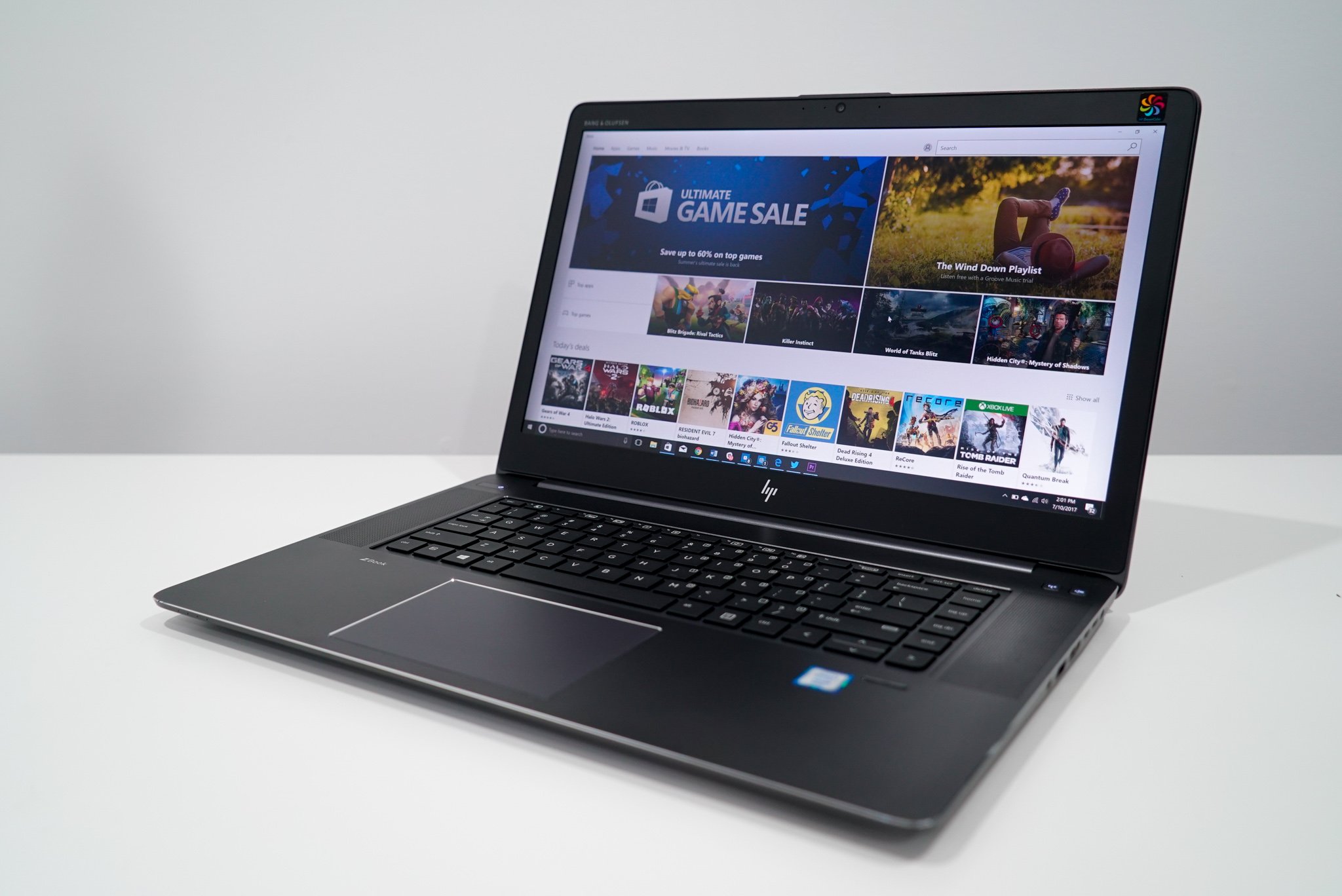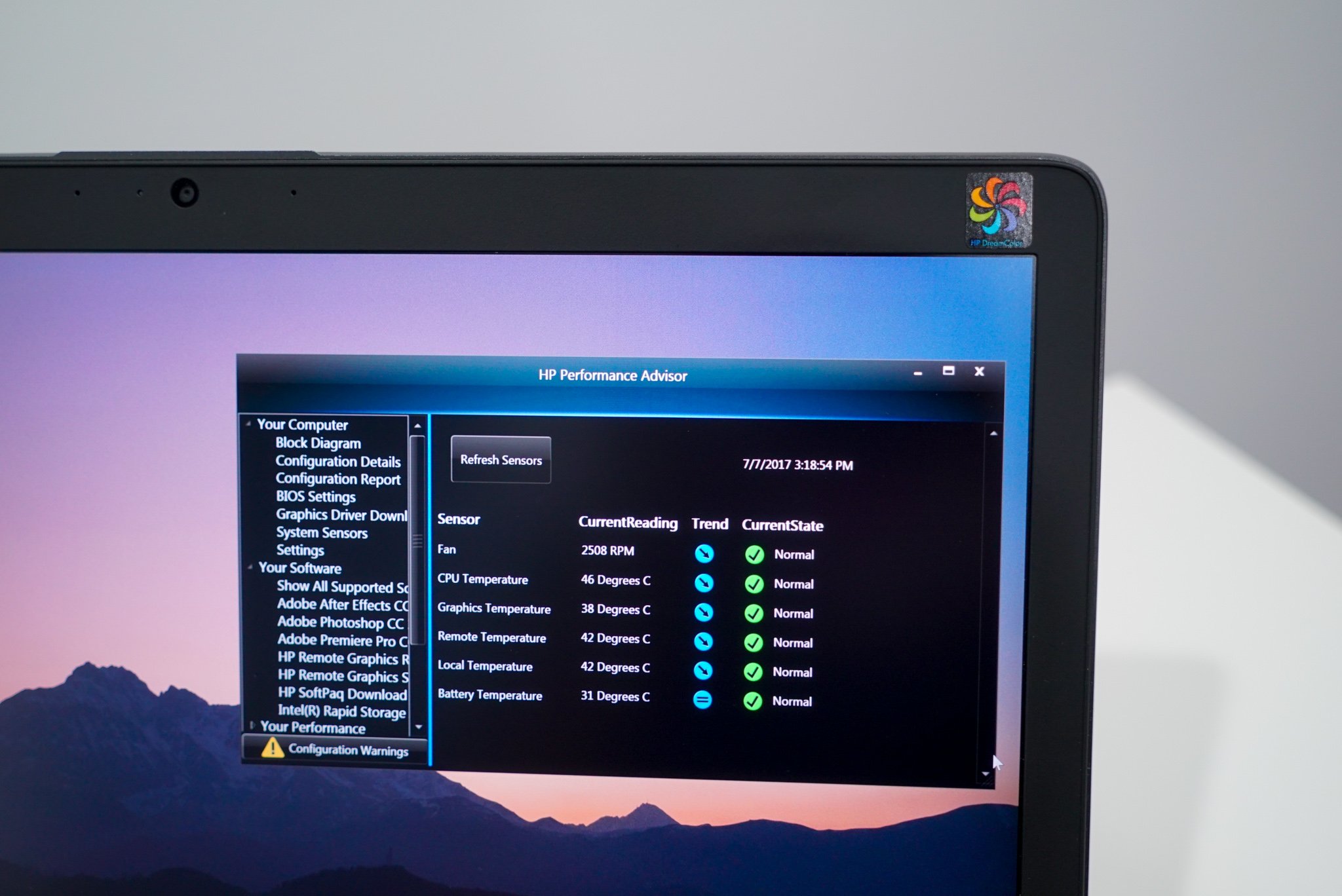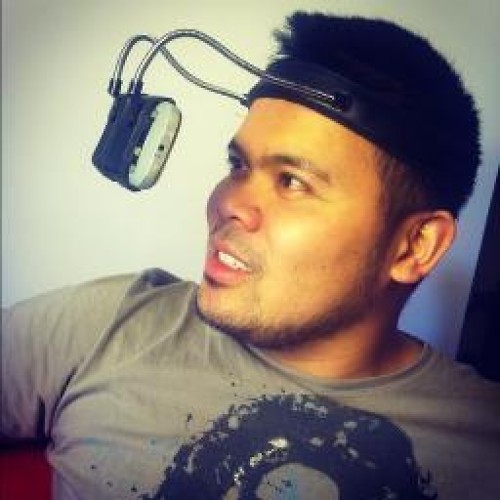As a video editor who's constantly on the go, I need a portable workstation that can keep up with my workflow. The latest generation of the ZBook Studio from HP satisfies that need. It has specifications that provide excellent performance, and it's not too bulky or heavy to carry around when switching locations.
Hardware
Let's start with the design. The ZBook Studio G4 is crafted with a fully machined aluminum and magnesium body with diamond-cut edges. It feels sturdy, and I don't notice any creaking or hear any loose parts when handling the laptop. It's 18mm thick and 4.4 pounds, which is light and thin for a workstation.

This unit is equipped with a 15.6-inch UHD DreamColor matte non-touch display, but there are also options for Full HD with or without touch functionality. I'm very happy with the display. Images appear sharp, the colors look great, and it's not glossy. The built-in DreamColor app on the taskbar also lets you change the color profile on the fly. For example, I change the profile to sRGB when I'm editing videos for color accuracy. For everything else, I use the native profile for more punchy colors.
While I'm mostly happy with the display, I wish the viewing angles were better. There's a noticeable change in brightness when tilting the display up or down.
When it comes to specifications, the ZBook Studio G4 has plenty of configurations available. This unit comes with the 7th gen Intel Xeon processor, 32GB of RAM, NVIDIA Quadro M1200 with 4GB memory for video, and 512GB of HP Zturbo PCIe drive.
| Category | Specs |
|---|---|
| OS | Windows 10 64 |
| CPU | Intel Xeon 1535M (7th gen) |
| Display | 4K UHD 15.6-in. IPS Screen |
| RAM | 32GB ECC (2x16GB) |
| Graphics | NVIDIA Quadro M1200 (4GB) |
| Storage | 512GB HP Z TURBO DRIVE PCIe(MLC) |
| Battery | 92Whr Fast Charging Battery |
| WiFi | Intel vProWLAN |
The left side includes the security lock slot, Ethernet port, two USB 3.0 ports, and an SD card reader. The right side has the audio combo jack, another USB 3.0 port, HDMI, two Thunderbolt 3 ports, and the power connector.
All the latest news, reviews, and guides for Windows and Xbox diehards.


The backlit keyboard is comfortable to type on, with great key travel. I'm not a fan of having the home button directly next to the backspace button because I've pressed it several times by accident when I wanted to delete some typos. I also wish it was easier to disable pressing the Fn key when I want to use the Function keys for screen brightness or volume. After wasting so many hours searching online, it required me editing a configuration file, which is more complicated than it needed to be.
The trackpad gives you 5.5 inches of space to work with. It's comfortable to touch, click, or perform gestures. It has Precision Touch, so the built-in Windows 10 gestures work, but it's not on by default. Out of the box, Alps TouchPad is the software running the touchpad. I prefer Precision from Microsoft, but others might appreciate the fact that HP gives you options to switch between the two.

There are dual front-facing speakers on the left and right sides of the keyboard. I had issues with them at first where I would hear crackles when using the Movies & TV or Netflix, but the problem disappeared when I uninstalled and reinstalled the audio drivers.
Below the arrow keys on the right side is the fingerprint reader. You need to swipe your finger down, which I'm not a fan of. I prefer just placing my finger on top of a reader. You can use it for Windows Hello to log into the laptop.
Software
Windows 10 Pro is included, and there's a lot of HP software included that made me feel overwhelmed. For example, there's an app called HP Client Security which constantly bothered me with notifications. I uninstalled it after one day. There are also too many ways to find software updates for the ZBook. There's HP Support Assistant, HP Software Setup, and HP SoftPaq Download Manager. I honestly don't know which one I'm supposed to be using.
When it comes to everyday tasks, the ZBook Studio just breezes through. There are no performance issues when cycling though multiple apps or watching 4K videos. We can thank the Intel Xeon processor and 32GB RAM for that.

Benchmarks
This configuration came with an Intel Xeon 1535M (7th gen), 32GB RAM, and 512GB HP Z Turbo drive. I used this laptop as my primary device for about a week, and I did not have much to complain about.
CPU
Geekbench 4.0 Benchmarks (Higher is better)
| Device | CPU | Single core | Multi core |
|---|---|---|---|
| HP ZBook Studio | Xeon 1535M | 4,931 | 16,974 |
| Surface Pro 2017 | i7-7660U | 4,513 | 9,346 |
| Surface Laptop | i5-7200U | 3,725 | 7,523 |
| Dell Latitude 5285 | i7-7600U | 4,635 | 9,289 |
| Lenovo ThinkPad X270 | i7-7600U | 4,512 | 8,566 |
| Lenovo X1 Carbon | i5-7300U | 4,139 | 8,311 |
| Samsung Notebook 9 15 Ext | i7-7500U | 4,316 | 8,320 |
| Dell XPS 13 (9360) | i7-6560U | 4,120 | 7,829 |
| HP Spectre 13 | i7-7500U | 4,100 | 7,469 |
| Surface Book | i7-6600U | 3,948 | 7,415 |
Storage
CrystalDiskMark (Higher is better)
| Device | Read | Write |
|---|---|---|
| HP ZBook Studio | 1,241 MB/s | 982 MB/s |
| Lenovo Yoga 720 | 1,904 MB/s | 1,169 MB/s |
| Lenovo X1 Carbon | 1,518 MB/s | 1,188 MB/s |
| Samsung Notebook 9 15 Ext | 1,365 MB/s | 1,213 MB/s |
| Razer Blade Pro | 2,571 MB/s | 2,467 MB/s |
| Dell XPS 15 (9560) | 2,207 MB/s | 1,628 MB/s |
| Dell XPS 13 (9360) | 1,287 MB/s | 794 MB/s |
| HP Spectre x360 15 | 1,128 MB/s | 862 MB/s |
| Surface Book | 1,018 MB/s | 967 MB/s |
| Dell Latitude 7280 SATA | 428 MB/s | 412 MB/s |
For video editing, the ZBook Studio puts a smile on my face. In addition to having the color accurate 4K DreamColor display, scrubbing and playing back 4K videos on the timeline is buttery smooth. Exporting 4K video with color-corrected clips also takes about twice the length of the video, which is about the same performance as the Razer Blade with GTX 1060 graphics card. On the new PCMark 10 benchmark, the ZBook Studio scored 4,463.
Don't expect the ZBook Studio to be a gaming machine though. It only scored 3,907 on the 3DMark Fire Strike benchmark, compared to 9,100 on the Razer Blade laptop with NVIDIA GTX 1060.
The ZBook Studio doesn't get noticeably hot. Under stress, the hot spot is the space above the keyboard area. You can use the HP Performance Advisor app to check the status of the various sensors like the CPU and Graphics temperature. The fans are quiet too, and I only hear them when exporting videos on Adobe Premiere Pro.

Battery
The 8-cell 92-WHr battery on the ZBook Studio gives me about 5.5 hours of usage. That would be more than enough time if I wanted to do some work at the coffee shop. However, I usually plug it in when I'm editing videos. Fast Charging is supported so you can charge the laptop from zero to 50% in just 30 minutes. The power adapter isn't enormous either, so it's not a problem bringing the laptop from one place to another.
Verdict
Overall, the HP ZBook Studio has become my favorite video editing laptop. It has the all the specifications I need for incredible performance and a sharp and accurate display that's critical to my work. It's also incredible that this machine passes MIL-STD-810G testing, meaning it is resistant to drops, vibrations, extreme temperatures, and more. It doesn't mean I'll be using this laptop in the desert or a tropical rainforest, but it's good to know that it's more durable than most laptops out there. Having a full-size SD card reader built-in is also a small feature that's often overlooked by most manufacturers, but greatly appreciated here on the ZBook Studio.

I'm not a fan of all the extra HP software included, because it feels unnecessary. However, it isn't hard to uninstall the ones you don't like. If Microsoft sells this laptop in their store as Signature Edition without all the extra software, I'd recommend buying it from there.
The ZBook Studio G4 isn't cheap starting at about $1,300. Depending on your needs, you can customize the specifications that can easily go over $3,000. You're paying for its performance and durability while maintaining a good size and weight. Creators who are usually on the go are going to be happy with this laptop.
Pros:
- Excellent performance.
- Color-accurate display.
- Durable design.
- Has an SD card reader.
Cons:
- Includes many unnecessary HP apps.
- Fingerprint reader requires swipe, which takes longer.


